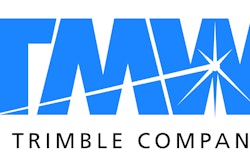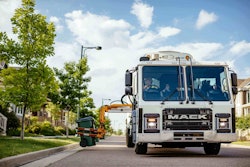Note: This is the second of the three part series that looks ahead at the future of trucking. Subsequent articles will publish throughout the week. The first installment, Connectivity a key component in the future of trucking, can be found here. The second installment, Digitizing the trade transaction: the ‘next big thing’ in trucking, can be found here.
Onboard diagnostics and vehicle systems are already so complex that newer model trucks are difficult to service unless you rely on a dealership, and Fleet Complete Chief Strategy Officer Sandeep Kar says that will only continue to develop in the years ahead.
“That is a trend that is driving more dealership revenues already,” he says. “That is why OEMs are pushing prognostics so much is that they want to divert that [repair] traffic towards dealership.”
In the event of an accident, who assumes the liability of a truck that doesn’t have a human behind the wheel is muddled, but Kar expects that picture to become more clear and it will benefit the OEM. Kar says he believes OEMs will assume some of the liability of their autonomous trucks, but will mandate that they be serviced and maintained by an authorized dealer.
“If not, [they] will not stand by that liability coverage because you have compromised the truck by using an independent repair facility,” he says. “That could be another way for the OEM to generate income.”
The future of mobility and infrastructure
Low fuel costs have stolen some of vehicle platooning’s thunder recently, but Kar expects that to heat up in the immediate future.
“Platooning will be first wave autonomous trucking, and that will happen within the next six to 12 months,” he says. “This technology is going to be used very soon. Everything is lined up.”
The Federal Highway Administration oversaw a series of three-truck platoon tests near Centreville, Va., last month and coordinated a successful two-truck platoon test in Texas last summer.
A partisan bill that would allow trucks using autonomous technologies to shorten their following distance to enter into truck platoons was recommended for passage by the Iowa State House earlier this year, but hasn’t yet been enacted.
Last month, U.S. Department of Transportation Secretary Elaine L. Chao introduced the department’s “A Vision for Safety” initiative, which replaces the Federal Automated Vehicle Policy released in 2016. This updated policy offers a path forward for the safe deployment of automated vehicles by encouraging new entrants and ideas that deliver safer vehicles; expediting regulatory processes to help match the pace of private sector innovation; and supporting industry innovation and encouraging open communication with the public and with stakeholders.
Fuel of the future
The connected trucks of the future will almost certainly be powered by one or a combination of options, including diesel, electric, hybrid or fuel cell.
“Hybrid is a bridge to 100 percent electrification,” Kar says, noting hybrid technologies provide production scale for batteries which reduce their costs overall. “Maturity of electrics will come even faster. The more hybrid vehicles on the road, the faster battery costs come down.”
It’s difficult to predict, Kar says, the preferred fuel of the future but as green energy momentum mounts, hydrogen will become a major player.
“Electric technologies are made through a very carbon-intensive process,” he says. “Of all the technologies, hydrogen seems to be the most powerful yet most challenging.”
The lack of a commercial hydrogen infrastructure will be a major hurdle to clear, but recent developments by Toyota and the continued work of Nikola Motor Company on its fuel cell Class 8 truck have given the fuel some momentum.
“Why hybrid is moving forward faster than electrification,” Kar says, “is that it doesn’t need any additional infrastructure.”
While the passenger car industry tends to be used as a benchmark for where trucking is headed, Drivewyze Chief Operating Officer Leo Jolicoeur sees more similarities with airlines.
Sophisticated communications used in the aviation industry allow tens of thousands of airplanes per day to relay their location and equipment status in real-time back to a centralized location with minimal human input.
“I see the [trucking] infrastructure headed in a similar direction,” he says. “Whether a truck is an electric truck or fossil fueled, we’re going to build out that infrastructure to ensure real-time communication with all vehicles on the road and use that real-time infrastructure for safety, mobility, productively and a number of other types of applications.”












